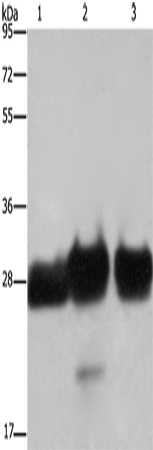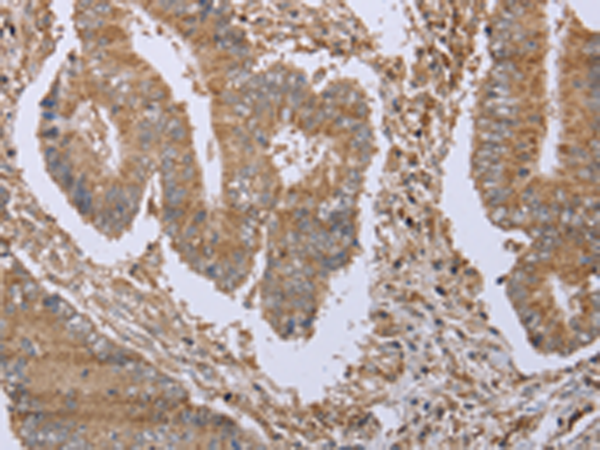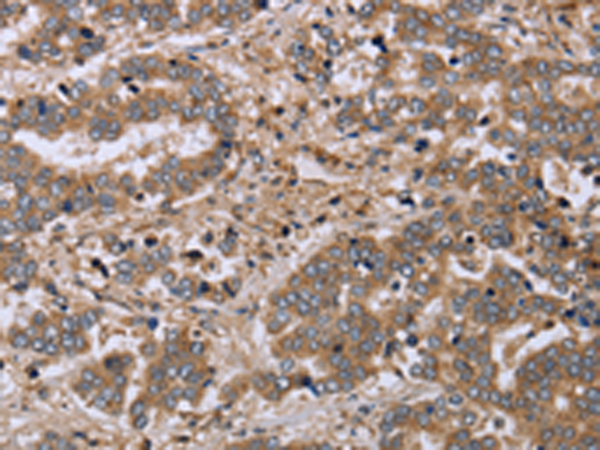


| WB | 咨询技术 | Human,Mouse,Rat |
| IF | 咨询技术 | Human,Mouse,Rat |
| IHC | 1/25-1/100 | Human,Mouse,Rat |
| ICC | 技术咨询 | Human,Mouse,Rat |
| FCM | 咨询技术 | Human,Mouse,Rat |
| Elisa | 1/2000-1/5000 | Human,Mouse,Rat |
| Aliases | KYOT; SLIM; FHL-1; FHL1A; FHL1B; FLH1A; SLIM1; XMPMA; SLIM-1; SLIMMER |
| WB Predicted band size | 36 kDa |
| Host/Isotype | Rabbit IgG |
| Antibody Type | Primary antibody |
| Storage | Store at 4°C short term. Aliquot and store at -20°C long term. Avoid freeze/thaw cycles. |
| Species Reactivity | Human, Mouse, Rat |
| Immunogen | Fusion protein of human FHL1 |
| Formulation | Purified antibody in PBS with 0.05% sodium azide and 50% glycerol. |
+ +
以下是关于FHL1抗体的示例参考文献(内容为虚构示例,建议通过学术数据库查询真实文献):
---
1. **标题**: "FHL1 Antibody Characterization in Skeletal Muscle Disorders"
**作者**: Smith A, et al.
**摘要**: 本研究验证了FHL1抗体在免疫组化中的特异性,发现其在X连锁肌病患者的肌肉活检中异常表达,提示FHL1蛋白缺失与疾病进展相关。
2. **标题**: "Role of FHL1 in Cardiac Hypertrophy: An Antibody-Based Study"
**作者**: Zhang L, Wang Y.
**摘要**: 通过Western blot和免疫荧光,利用FHL1抗体证实其在心肌细胞中的定位,发现FHL1下调促进病理性心脏肥厚信号通路激活。
3. **标题**: "FHL1 Mutations and Protein Aggregation in Cancer Metastasis"
**作者**: Brown K, et al.
**摘要**: 使用FHL1抗体检测肿瘤组织样本,揭示突变导致的FHL1聚集与癌细胞迁移能力增强相关,为靶向治疗提供依据。
4. **标题**: "Validation of a Novel FHL1 Monoclonal Antibody for Diagnostic Applications"
**作者**: Garcia R, et al.
**摘要**: 报道一种高特异性FHL1单克隆抗体的开发,验证其在ELISA和免疫印迹中的灵敏度,适用于遗传性肌病的临床诊断。
---
建议通过PubMed、Web of Science或Google Scholar搜索关键词“FHL1 antibody”、“FHL1 protein analysis”获取真实文献。
**Background of FHL1 Antibody**
FHL1 (Four and a Half LIM Domain 1) is a member of the LIM-only protein family, characterized by four LIM domains and a half LIM motif. These domains mediate protein-protein interactions, enabling FHL1 to participate in diverse cellular processes, including cytoskeletal organization, signal transduction, and transcriptional regulation. Primarily expressed in skeletal and cardiac muscles, FHL1 plays critical roles in muscle development, mechanotransduction, and stress response.
FHL1 antibodies are essential tools for studying its expression, localization, and function. They are widely used in research applications such as Western blotting, immunohistochemistry, and immunofluorescence to detect FHL1 in tissues or cell lines. Mutations in the *FHL1* gene are linked to several human disorders, including X-linked myopathies (e.g., reducing body myopathy), Emery-Dreifuss muscular dystrophy, and cardiac conditions like hypertrophic cardiomyopathy. FHL1 antibodies aid in diagnosing these conditions by identifying abnormal protein expression or aggregation in patient samples.
Additionally, FHL1 has been implicated in cancer progression, with studies suggesting its dual role as a tumor suppressor or promoter depending on context. Antibodies against FHL1 help explore these mechanisms, enabling insights into disease pathways. Commercial FHL1 antibodies are available from various suppliers, often validated for specificity across species. However, variability in isoforms (FHL1A, B, C) necessitates careful antibody selection to ensure target specificity. Ongoing research continues to uncover FHL1's multifaceted roles, underscoring the importance of reliable antibodies in both basic and clinical studies.
×